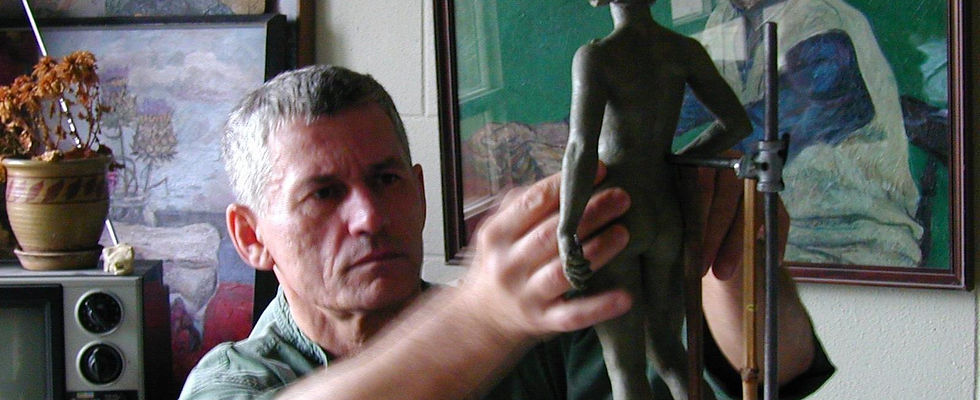Queen of the Amazons
Author: Victor Sirotin
Proof-reading: Lidia Pecherskaya
For TALANT | January 20, 2022

Working on "Amazon" took me a very long time, about eight months, I think, but that didn't upset me at all, because it's a pleasure to be in the subject, although it's not easy. The point is that, "communicating" with her, I wanted to find the key to the plastic language of the ancient Greek masters. I looked at the fragments of sculptures of those times, studied them in museums, drew in them - all with the aim of understanding their understanding of volume and space.
Once - it was a very long time ago - in the Pushkin Museum of Fine Arts in a special room for "guest" expositions there were literally fragments of Greek vases, amphorae, and other utensils. A. S. Pushkin Museum of Fine Arts in a special hall for "guest" expositions literally exhibited fragments of Greek vases, amphorae, and other utensils. Among them were fragments that were magnificent in their plastic merits. For the most part they were aesthetically verified heads of kouros, and probably also of gods and goddesses. The status of the "heads" was not important to me, and it was very difficult to determine. But what struck me - truly struck me! - is the way Greek craftsmen (probably just day laborers-ceramists) decided the space in the embodiment of these heads, and how the form was given in them. The thing is that, being no bigger than a hen's egg in size, these knocked down heads formed (or even organized) around themselves "their" space.


Let me explain looking at these works of true art from different points of view and from different angles, I noticed that this space "moves" around them. Moreover, at the slightest shift of consideration or change of point of view along the frontal, this space suddenly "popped up" from somewhere, revealing a form in a new dimension, which again needs to be explained.

Looking at the face in front and going around it horizontally in one direction or another, I noticed that from the cheekbone to the back of the head or the back of the sculpture there was a huge space ("A kilometer!" - it flashed in my head). I returned to my original point of view, and then "moved" in the other direction. So, time after time I returned to the original point of view, and then again moved in one direction or another - the effect was the same! And then I had a rhetorical question at that moment: "How, in what way, thanks to what sciences they were able to "move" space in the direction they needed, without losing either the proportionality of volume or the applied function of a vase or amphora?!". In an attempt to understand, and if I was lucky, to unravel at least part of these mysteries and riddles, I started sketching fragments. I dare hope I understood something. Later, remembering what I understood, I tried to consolidate my understanding and, if possible, to go further in my work on the "Queen of the Amazons".
